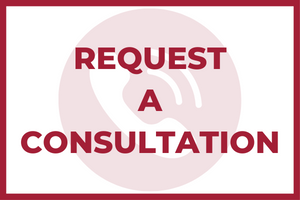Teaching Guides & Resources > Teaching Strategy & Pedagogy > Integrating Technology
In today’s evolving educational landscape, integrating technology into teaching practices is no longer optional, it’s a necessity. Technology can enrich learning experiences, provide new avenues for student engagement, and enhance both teaching effectiveness and student outcomes. This page serves as a guide for faculty seeking to effectively integrate technology into their teaching, whether they are just beginning to explore new tools or are looking for ways to enhance their current practices.
Why Integrate Technology?
Integrating technology into teaching not only supports a variety of learning needs and enhances engagement but also prepares students for the technological demands of the modern workforce. From fostering collaboration through digital platforms to enhancing accessibility with multimedia tools, the possibilities are vast. The integration of technology should always align with your instructional goals, ensuring that it enhances rather than distracts from the learning experience.
Benefits of Accelerated Terms
- Faster Course Completion: Students can complete classes in shorter time, allowing for quicker progress toward degrees.
- Flexible Scheduling: These terms can fit around full-time work or other commitments. Students can focus on fewer courses at a time.
- Increased Course Offerings: Multiple start dates throughout the year, allowing for more course enrollment opportunities.
- Potential Cost Savings: Accelerated programs may reduce overall costs by shortening the time to graduation.
- Focused Learning: Students feel that shorter terms offered greater immersion in the subject.
Key Strategies for Technology Integration
- Select Appropriate Tools: Choosing the right tools for your courses can be overwhelming. Focus on selecting technology that aligns with your instructional goals and enhances student engagement. Tools like collaborative platforms and multimedia software can support a wide range of pedagogical strategies, from active learning to personalized learning pathways.
- Enhance Accessibility: Technology can make learning more inclusive. Tools like screen readers, captioning software, and text-to-speech applications ensure that content is accessible to all students, including those with disabilities. Instructors can also use digital resources to offer alternative formats for learning materials.
- Foster Student Engagement: Interactive technologies like polls, quizzes, and discussion boards can increase student participation and promote a collaborative learning environment. When students actively use technology, they are more likely to retain and apply the knowledge they gain.
- Use Data to Inform Teaching: Technology provides a wealth of data about student performance. Tools that track student progress, participation, and assessment results can help instructors identify areas where students are struggling and adjust teaching methods accordingly. By using data to inform decisions, faculty can create more effective and responsive learning environments.
- Embrace Blended and HyFlex Learning: Blended learning combines face-to-face instruction with online elements, offering flexibility for students and instructors alike. HyFlex (Hybrid-Flexible) learning takes this a step further by allowing students to choose whether to participate in-person, online synchronous, or online asynchronous. Technology is at the heart of these models, ensuring that learning is seamless regardless of how students engage with the course material.
- Support Continuous Learning and Development: Technology is constantly changing, and so is the way we teach. Faculty should seek opportunities for ongoing professional development to stay up to date with new tools and techniques. Workshops, webinars, and online courses can provide valuable insights into the latest trends in educational technology. Check out CETL’s Faculty Learning Opportunity (FLO) calendar for upcoming learning opportunities. Additionally, you can reach out to request a 1:1 consultation with a CETL staff member on a number of topics to tailor your technology integration and teaching strategies to better meet your course goals and student needs.
Best Practices for Effective Use of Technology
- Start Small: Begin by integrating one or two tools that align with your teaching objectives. This will allow you to become comfortable with the technology before expanding its use.
- Provide Clear Instructions: When using technology, ensure that students know how to access and use the tools. Clear, step-by-step instructions can prevent frustration and help students feel confident in navigating digital platforms.
- Evaluate Technology Regularly: Periodically assess the effectiveness of the technology you use. Does it meet your teaching goals? Are students benefiting from its use? Adjust your approach as needed based on feedback and outcomes.
- Collaborate with Colleagues: Technology integration can be challenging, but collaboration with colleagues can offer new perspectives and strategies. Share your experiences and learn from others to expand your tech toolkit.
Resources
- Reynolds Learning Management System (LMS) Resources: Learn how to effectively use the Canvas LMS to organize course materials, facilitate communication, and assess student performance.
- Free Online Teaching Tools for Engaging Students: Explore CETL’s collection of digital tools and apps that can help make learning more interactive and engaging for your students.
- Web Accessibility Guidelines: Understand the importance of web accessibility and how to use technology to ensure all students can access your course content.
- Blended and HyFlex Learning Resources: Discover best practices and resources for implementing blended and HyFlex learning in your courses.
- CETL Faculty Development Workshops: Participate in CETL's Faculty Learning Opportunities (FLOs) that focus on technology integration and other teaching strategies.
Additional Resources
-
Alber, R. (n.d.). Using student data to inform teaching. Edutopia. https://www.edutopia.org/blog/using-student-data-inform-teaching-rebecca-alber

